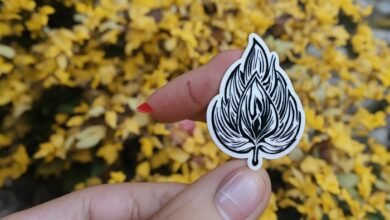Rekhachithram: A Complete Guide to the Art, Culture, Techniques, and Impact of Rekhachithram in Modern and Traditional India

Rekhachithram is a traditional Indian art form that emphasizes the power of line drawing to express emotions, stories, and spiritual themes. The word rekhachithram is derived from two Sanskrit terms – “rekha” meaning line and “chithram” meaning picture. As such, rekhachithram refers to the creation of visual art using carefully drawn lines. Rekhachithram holds immense cultural significance, often seen in temple murals, ancient manuscripts, and religious iconography.
The Origins and Evolution of Rekhachithram Through History
The history of rekhachithram dates back to ancient India, where it was widely used in temple architecture and religious scripts. Rekhachithram was often employed by artists and scribes to depict mythological scenes and deities using only lines and contours. From palm-leaf manuscripts in Odisha to intricate murals in Kerala, rekhachithram played a key role in documenting history and religion. The evolution of rekhachithram continued during the Mughal and colonial eras, adapting new styles while preserving its essence.
Rekhachithram in Indian Temples and Classical Art Forms
Temples across South India are rich in rekhachithram artworks, showcasing divine stories through detailed line drawings. In places like Hampi and Thanjavur, rekhachithram adorns pillars, ceilings, and walls, becoming a sacred form of visual storytelling. Rekhachithram is also integral to classical Indian art forms such as Kalamkari and mural painting, where outlines created with natural dyes and pens define the structure of the artwork. Through these traditions, rekhachithram continues to remain a vibrant and respected art.
Materials and Tools Used in Traditional Rekhachithram
The practice of rekhachithram traditionally involves using natural materials such as palm leaves, bamboo pens, charcoal, and plant-based ink. These tools helped create precise lines that are central to rekhachithram. Artists mastered control over pressure and flow to create varying textures in their rekhachithram artworks. Today, while some continue to use traditional methods, modern rekhachithram artists also work with pens, brushes, styluses, and digital tablets to replicate the fine line art that defines rekhachithram.
Techniques and Styles Unique to Rekhachithram
Rekhachithram is known for its use of bold, continuous lines, cross-hatching, and symbolic motifs. Unlike shading-based art, rekhachithram focuses solely on contours and flow. Some styles of rekhachithram rely on geometric precision, while others embrace fluid, organic forms. Techniques such as “ekarekha chithram” (single-line drawing) are highly revered in rekhachithram and require great skill and patience. Whether depicting gods or nature, rekhachithram ensures every stroke has intent and elegance.
Rekhachithram in the Digital Age and Modern Interpretations
With the advent of digital technology, rekhachithram has seen a revival in the hands of young artists using tablets and software like Procreate and Illustrator. These tools allow artists to explore rekhachithram without the limitations of physical media. Digital rekhachithram has reached global audiences via social media, inspiring new generations to experiment with this ancient form. Despite the modern twist, digital rekhachithram retains the minimalism and discipline that define the traditional style.
Rekhachithram and Its Role in Indian Education and Art Curriculum
Rekhachithram is often introduced in Indian art education as an entry point into drawing, helping students understand line control and composition. Schools and art institutions across India encourage students to practice rekhachithram as a means to improve their concentration, patience, and hand-eye coordination. In universities, rekhachithram is studied under traditional Indian art forms, emphasizing its theoretical and historical significance. Workshops and rekhachithram competitions are also common, celebrating this timeless art.
Rekhachithram in Ayurveda, Yoga, and Spiritual Practices
Rekhachithram is closely associated with spiritual practices, especially in Ayurveda and Yoga traditions. In Ayurveda, rekhachithram is used to illustrate anatomical charts and herbal diagrams with precise lines. Similarly, in Yogic philosophy, mandalas and yantras—often drawn using rekhachithram techniques—are tools for meditation and spiritual awakening. The sacred geometry seen in rekhachithram supports inner focus, symbolizing cosmic order and divine connection.
Prominent Rekhachithram Artists and Their Contributions
Throughout history, many rekhachithram artists have made significant contributions to Indian art. From temple muralists to manuscript illustrators, rekhachithram has been preserved by generations of skilled hands. In modern times, artists like Namboothiri and K. M. Vasudevan Namboothiri brought rekhachithram to the limelight with their expressive line drawings. Their work demonstrated how rekhachithram can capture not just form but emotion, culture, and storytelling in minimalistic ways.
Rekhachithram in Cultural Festivals and Exhibitions
Rekhachithram is frequently showcased in art exhibitions and cultural festivals across India. Events such as the Kochi-Muziris Biennale and the Kala Ghoda Arts Festival have featured rekhachithram installations that blend tradition with modern themes. During temple festivals, live rekhachithram sessions are conducted, where artists create spiritual images in front of large crowds. These events celebrate rekhachithram as a living, breathing tradition that continues to evolve while preserving its roots.
Symbolism and Meaning in Rekhachithram Artwork
Every line in rekhachithram carries meaning—symbolizing energy, movement, and emotion. In mythological rekhachithram, lines are drawn to evoke the divine, often symbolizing protection, balance, and truth. Patterns in rekhachithram may also reflect natural elements like fire, water, or wind. Artists use rekhachithram to tell stories without colors or words, letting the viewer interpret the deeper layers. The minimalist nature of rekhachithram makes it a meditative, symbolic art form.
Rekhachithram in Tattoos, Fashion, and Modern Decor
Rekhachithram has expanded its presence into tattoos, fabric design, and home decor. Many tattoo enthusiasts choose rekhachithram-inspired designs for their spiritual and aesthetic appeal. In fashion, rekhachithram patterns are used on sarees, scarves, and jewelry. Interior designers incorporate rekhachithram artwork into minimalist home decor, using line drawings on walls, cushions, and frames. This modern application of rekhachithram showcases its versatility and enduring beauty.
Regional Variations of Rekhachithram Across India
Different states in India have their unique styles of rekhachithram. In Kerala, rekhachithram is heavily influenced by mural traditions and Kathakali illustrations. In Odisha, the Pattachitra style uses rekhachithram on palm leaves and silk scrolls. Rajasthan’s miniature paintings also use rekhachithram techniques for outlines. Each region adapts rekhachithram to its local culture, beliefs, and aesthetics, making it a diverse yet unified art form across the nation.
Rekhachithram and Its Influence on Animation and Visual Storytelling
Rekhachithram has inspired several animators and graphic storytellers who use line art to bring stories to life. The crisp, expressive nature of rekhachithram makes it suitable for frame-by-frame animation, especially for mythological and educational content. Indian animation studios have adopted rekhachithram styles in storytelling, blending tradition with technology. As a visual language, rekhachithram provides clarity and emotion, perfect for conveying layered narratives.
The Role of NGOs and Art Collectives in Promoting Rekhachithram
Several NGOs and art collectives work to preserve and promote rekhachithram by conducting workshops, exhibitions, and artist residencies. Organizations like the India Foundation for the Arts support rekhachithram projects that blend tradition with innovation. These efforts ensure that rekhachithram remains accessible to younger generations and doesn’t fade into obscurity. Through documentation and digital archiving, rekhachithram finds new life in classrooms, galleries, and online platforms.
How to Learn Rekhachithram: Courses, Books, and Online Resources
For those interested in learning rekhachithram, many resources are available both online and offline. Art schools offer courses on rekhachithram, focusing on fundamentals such as line balance, rhythm, and form. Books on traditional Indian art often dedicate chapters to rekhachithram with step-by-step illustrations. YouTube channels and websites provide tutorials that help beginners master rekhachithram techniques. With practice and patience, anyone can learn to create beautiful rekhachithram drawings.
Conclusion
Rekhachithram is not just an art form—it’s a visual philosophy that embodies precision, spirituality, and storytelling. From temple walls to digital screens, rekhachithram has adapted to every era while maintaining its essence. Its simplicity makes it accessible, while its depth makes it eternal. Whether you’re an artist, a cultural enthusiast, or simply someone drawn to the beauty of lines, rekhachithram offers a journey into a world of expression, history, and meditative creativity. By learning, practicing, and appreciating rekhachithram, we preserve a vital thread of India’s artistic heritage.
FAQs
1. What does rekhachithram mean?
Rekhachithram is an Indian art form focusing on line-based drawings, where “rekha” means line and “chithram” means picture or drawing.
2. Is rekhachithram still practiced today?
Yes, rekhachithram is actively practiced by traditional artists and is gaining popularity among digital illustrators and art students.
3. What materials are used in rekhachithram?
Traditional rekhachithram uses palm leaves, bamboo pens, and natural ink, while modern versions may use pens, paper, and digital tablets.
4. Can I learn rekhachithram online?
Absolutely. Rekhachithram courses, tutorials, and videos are available online, making it easy for anyone to start learning at their own pace.
5. How is rekhachithram different from other forms of art?
Rekhachithram focuses entirely on the use of lines without shading or color, emphasizing contour, rhythm, and symbolic storytelling.





